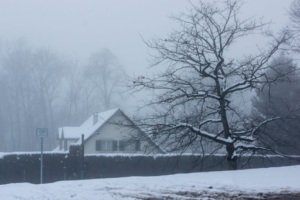Snowstorm Planning Checklist
 The winter season in Brevard can last up to 3.9 months, starting from November to March. The coldest month of the year is January, with an average low temperature of 29°F. Moreover, it is also the month with the most snow. The average snowfall is 5.1 inches.
The winter season in Brevard can last up to 3.9 months, starting from November to March. The coldest month of the year is January, with an average low temperature of 29°F. Moreover, it is also the month with the most snow. The average snowfall is 5.1 inches.
As winter storms can bring extreme cold and snow, it is crucial to have your snowstorm planning checklist in place. This will not only prepare you for a snowstorm but also help you know how to protect yourself before, during, and after a snowstorm.
Needless to say that planning and preparing can make a big difference in resiliency and safety in the wake of a snowstorm. In today’s post, that’s exactly what we’ll focus on. Let us walk you through the checklist for planning and preparing for a snowstorm. But before we get started, we’d advise you to get familiar with the snowstorm watch terms so that you can act fast and prep accordingly before the snowy weather.
Snowstorm Planning Checklist
Now that we have that out of the way, let’s take a look at the snowstorm planning checklist:
- Invest in a generator. This is a good way to keep your family safe and comfortable during a snowstorm. It is because, at times, people can get trapped in their homes for days without power. In such as situation, access to a generator and a good fuel supply will be feasible to stay cozy and warm indoors.
However, it is important to understand that the generator should not be used indoors or in the basement or crawl space. Always locate the unit away from windows, vents, and doors as it releases carbon monoxide, which is dangerous for health. Plus, indoor use of a generator also increases the risk of fire.
- As carbon monoxide can be a big problem, making sure your smoke and carbon monoxide detectors are installed, and working is advisable.
- Make sure to create a winter home emergency kit. As per the American RedCross guidelines, you should have a flashlight, battery-powered radio, extra batteries, first aid kit, medication of at least seven day supply, sanitation, and personal hygiene items, water and food of three days, cell phone with chargers, and alternate heating methods like coal-burning stoves.
- Stock up on blankets and make sure to purchase sand and ice melt.
- Make sure that your fire extinguisher is working properly
- Insulate your attic, windows, and walls to ensure optimum indoor temperature.
- Make sure to get your heating equipment and chimneys clean and inspected.
- Get gutters cleared from the debris and leaves to prevent ice dams on the roof, further increasing the risk of roofing damage.
Things to do When the Storm Hits
- When the snowstorm begins, stay inside your home. Don’t leave until necessary. Watch and listen for important weather changes.
- Bring your pets indoors.
- Never leave lit candles unattended.
- Besides this, while you’re at home, prevent the pipelines in your home from freezing. You can do this by leaving faucets slightly open and keeping sink doors open. This will help the warm air to circulate. In case of the pipes burst, make sure to shut off the valve and call our home restoration experts. At 911 Restoration of Brevard County, our team of property restoration specialists will arrive at your service in less than 45 minutes.
Tips to Follow After the Storm
- After the storm, make sure to exercise caution. Be careful of icy surfaces outdoors, whether walking or driving.
- Next, if you want to shovel snow, do it slowly and steadily. Don’t overexert yourself. Make sure to stop physical activity right away if you experience nausea, shortness of breath, dizziness, and excessive sweating. This is because studies show that heart attacks can be brought on by over-exertion from clearing snow during and after storms
- Keep yourself protected from frostbite and hypothermia by dressing in warm layers. According to RedCross, frostbite and hypothermia are the two most dangerous and potentially life-threatening emergencies during the winter season. Frostbite is a condition where the skin freezes during exposure to cold water or weather. Symptoms of Frostbite are numbness, blisters, blackened skin, and swelling. On the other hand, hypothermia is a more serious condition than frostbite. This is when you expose your body to cold temperatures. In such a situation, the body starts to lose heat faster than it can generate. Therefore, prolonged exposure to cold uses up the body’s stored energy and you may experience abnormally low body temperature, which can affect the brain and become life-threatening.
Therefore, it is crucial to keep all these tips in consideration to stay safe and protected during a snowstorm. However, if emergency strikes, like there is a water emergency due to a pipe burst because of freezing temperature or a fire breaks out, contact emergency services for help. Next, call our restoration experts for assistance. We can provide you with a customized restoration plan ensuring your home is restored to its livable condition—exactly the way it was before the water or fire damage.


